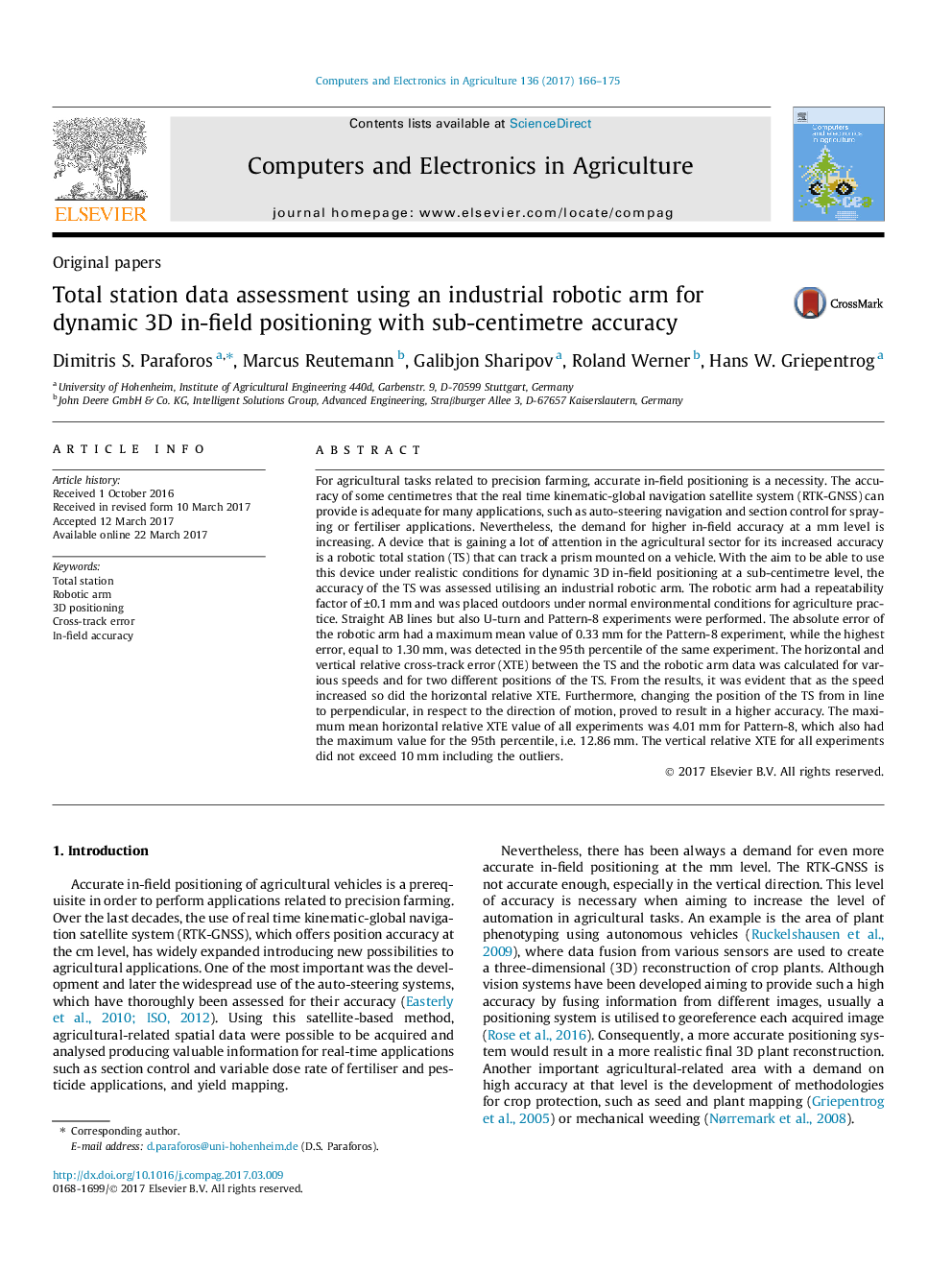| کد مقاله | کد نشریه | سال انتشار | مقاله انگلیسی | نسخه تمام متن |
|---|---|---|---|---|
| 6458847 | 1421112 | 2017 | 10 صفحه PDF | دانلود رایگان |

- AB lines, U-Turn, and Pattern-8 experiments were performed.
- As the speed increased so did the relative XTE.
- Changing the position of the TS from inline to perpendicular gave a better accuracy.
- The maximum mean horizontal XTE value was 4.01Â mm for Pattern-8 experiment.
- The vertical relative XTE did not exceed 10Â mm including the outliers.
For agricultural tasks related to precision farming, accurate in-field positioning is a necessity. The accuracy of some centimetres that the real time kinematic-global navigation satellite system (RTK-GNSS) can provide is adequate for many applications, such as auto-steering navigation and section control for spraying or fertiliser applications. Nevertheless, the demand for higher in-field accuracy at a mm level is increasing. A device that is gaining a lot of attention in the agricultural sector for its increased accuracy is a robotic total station (TS) that can track a prism mounted on a vehicle. With the aim to be able to use this device under realistic conditions for dynamic 3D in-field positioning at a sub-centimetre level, the accuracy of the TS was assessed utilising an industrial robotic arm. The robotic arm had a repeatability factor of ±0.1 mm and was placed outdoors under normal environmental conditions for agriculture practice. Straight AB lines but also U-turn and Pattern-8 experiments were performed. The absolute error of the robotic arm had a maximum mean value of 0.33 mm for the Pattern-8 experiment, while the highest error, equal to 1.30 mm, was detected in the 95th percentile of the same experiment. The horizontal and vertical relative cross-track error (XTE) between the TS and the robotic arm data was calculated for various speeds and for two different positions of the TS. From the results, it was evident that as the speed increased so did the horizontal relative XTE. Furthermore, changing the position of the TS from in line to perpendicular, in respect to the direction of motion, proved to result in a higher accuracy. The maximum mean horizontal relative XTE value of all experiments was 4.01 mm for Pattern-8, which also had the maximum value for the 95th percentile, i.e. 12.86 mm. The vertical relative XTE for all experiments did not exceed 10 mm including the outliers.
Journal: Computers and Electronics in Agriculture - Volume 136, 15 April 2017, Pages 166-175